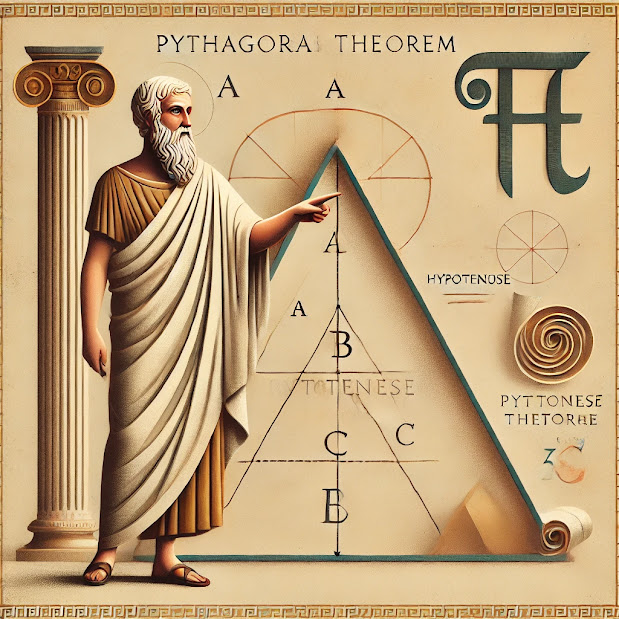The Power of Pi: Why the World Still Circles Around This Mysterious Number
Introduction: More Than Just 3.14
Pi (π) – the seemingly simple number that starts with 3.14 – is far from ordinary. This irrational, non-repeating, and never-ending number has intrigued scholars for over 4,000 years. From ancient Egypt to modern computer algorithms, Pi is everywhere – in circles, spheres, sound waves, probability theory, and even art. But why is this one number so significant? And how has it maintained such a strong presence in both mathematics and popular culture?
In this blog post, we explore the origins, mathematical properties, real-world applications, and cultural impact of Pi. Whether you're a math enthusiast, a curious reader, or an SEO-focused blogger, this comprehensive guide will help you understand why Pi is so much more than a number.
1. What is Pi? A Mathematical Definition
At its core, Pi (π) is defined as the ratio of a circle’s circumference to its diameter. No matter the size of the circle, this ratio always equals approximately 3.14159…
Formula:
Where:
-
is the circumference of the circle
-
is the diameter
Unlike rational numbers that can be written as fractions, Pi is irrational. Its decimal representation goes on forever without repeating, making it impossible to fully express in decimal or fractional form.
2. A Brief History of Pi
2.1 Ancient Beginnings
The earliest known approximations of Pi date back to ancient civilizations:
-
Babylonians estimated Pi as 3.125 around 2000 BCE.
-
Egyptians, in the Rhind Papyrus (c. 1650 BCE), calculated Pi as roughly 3.1605.
-
Archimedes of Syracuse (287–212 BCE) was the first to develop a geometrically rigorous method to approximate Pi, placing it between 3.1408 and 3.1429.
2.2 The Symbol "π"
The Greek letter π was first used to represent this number by Welsh mathematician William Jones in 1706. It was later popularized by Leonhard Euler, one of the most prolific mathematicians in history.
3. The Infinite Nature of Pi
Pi is transcendental, which means it is not the root of any non-zero polynomial equation with rational coefficients. In simpler terms, Pi is not just irrational – it's fundamentally unpredictable and can't be constructed using algebraic methods alone.
To this day, computers continue to calculate billions of digits of Pi, but no pattern has ever been found. This infinite nature fascinates mathematicians and continues to be a challenge for computational mathematics.
4. Real-Life Applications of Pi
Pi may be abstract, but its uses are incredibly concrete. Some key applications include:
4.1 Engineering and Architecture
Pi is used in the design of anything involving curves or circular motion:
-
Calculating areas and volumes of curved shapes
-
Designing wheels, arches, and domes
-
Aerospace and mechanical engineering
4.2 Physics and Wave Theory
In physics, Pi appears in:
-
Wave equations (sound, light, and quantum waves)
-
General relativity and electromagnetism
-
Calculating probabilities in quantum mechanics
4.3 Technology and Computer Science
-
Algorithms that simulate natural processes (fluid dynamics, simulations)
-
Signal processing and Fourier transforms
-
Cryptography and randomness testing
5. Pi Day: A Global Celebration
Every year on March 14 (3/14), the world celebrates Pi Day. It’s a fun mix of math appreciation and geeky celebration, often featuring:
-
Pi recitation contests
-
Circular foods like pies and pizzas
-
Educational events in schools and universities
In 2009, the U.S. House of Representatives officially recognized Pi Day, emphasizing its importance in promoting STEM education.
6. Pi in Popular Culture
Pi has made its way into books, movies, and music:
-
The movie "Pi" (1998) by Darren Aronofsky explores obsession with mathematical patterns.
-
Carl Sagan’s novel "Contact" speculates on a cosmic message hidden in the digits of Pi.
-
Music tracks like “Pi” by Kate Bush creatively incorporate its digits.
Even in tattoo art and memes, Pi symbolizes the beauty of mathematical mystery and human curiosity.
7. Common Misconceptions About Pi
7.1 Pi Equals 22/7
While 22/7 is a common approximation, it is not equal to Pi. It’s a rational number, while Pi is not. The approximation is convenient but limited in precision.
7.2 Pi Is Just for Circles
Although Pi originates from circle geometry, its influence stretches far beyond. From probability theory to statistics and even chaos theory, Pi frequently appears in surprising places.
8. Fun Facts About Pi
-
Record for memorizing digits: Over 70,000 digits, held by Rajveer Meena (India).
-
Pi has been calculated to over 100 trillion digits as of 2022.
-
The first 144 digits of Pi add up to 666, known as the "number of the beast" – a spooky coincidence!
9. Why Pi Still Matters
Despite thousands of years of study, Pi remains one of the most mysterious constants in mathematics. Its infinite and patternless nature symbolizes the limits of human knowledge and the infinite potential of discovery.
As technology advances, our need for precision increases, and Pi continues to play a crucial role in simulations, calculations, and even artificial intelligence.
Conclusion: The Endless Fascination with Pi
From ancient temples to cutting-edge quantum physics, Pi connects humanity’s past with its future. It reminds us that even in an age of rapid technological change, some mysteries remain eternal. Whether you’re eating pie on March 14 or solving complex equations, Pi is more than a number – it's a window into the universe.









.png)

Comments
Post a Comment